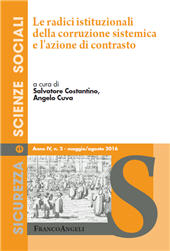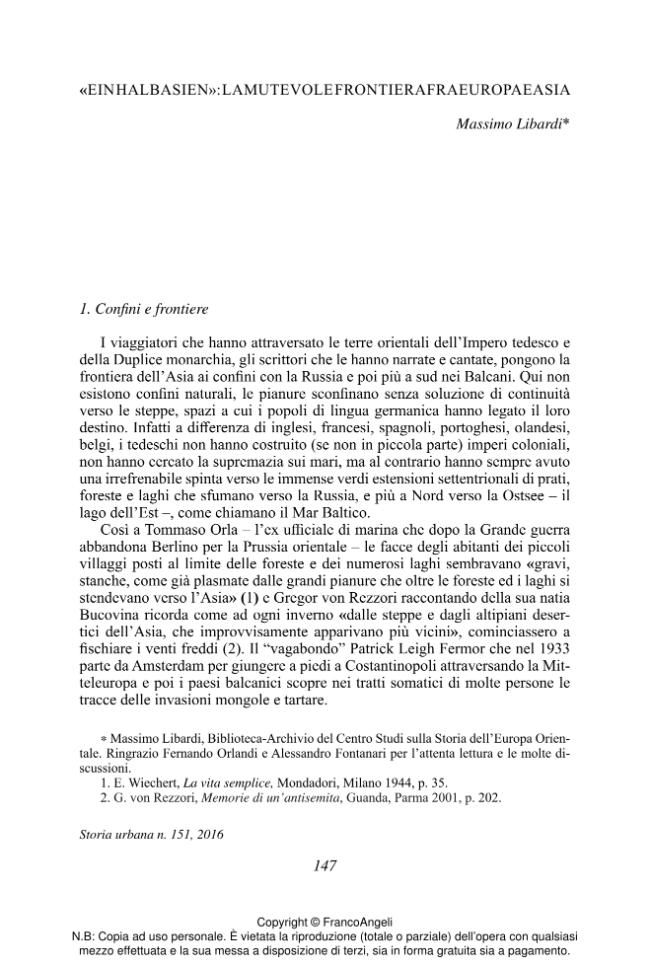Ein halb Asien : la mutevole frontiera fra Europa e Asia
147-180 p.
The other border: «Ein halb Asien».
L'articolo, utilizzando soprattutto contributi letterari, ricostruisce il tema del confi ne tra Europa e Asia nel periodo che va grossomodo dagli inizi dell'Ottocento agli anni Venti del Novecento. Dopo aver tematizzato la diff erenza tra confi ne e frontiera (border e frontier), il testo percorre la frontiera che separa l'Impero tedesco e la Duplice monarchia dall'impero zarista attraversando l'Yiddishland e quelle terre che lo scrittore galiziano Karl Emil Franzos chiama Halb-Asien. Abbandonato il confi ne orientale il viaggio prosegue sulla frontiera balcanica e poi, attraversato il Mar Nero, lungo il Caucaso, barriera tra l'Europa e l'Asia. Non si tratta di un viaggio solo geografi co, ma anche della storia delle rappresentazioni culturali. La defi nizione di frontiera sottende infatti un duplice movimento: la defi nizione «dell'altro» e quindi al tempo stesso la defi nizione di chi defi nisce l'altro. Non è infatti possibile defi nire «l'altro» se non a prezzo di rispondere alla domanda chi siamo noi: si
tratta di un complesso gioco di specchi, che rifl ette le immagini che ognuno ha creato dell'altro. [Testo dell'editore].
Based foremost on literary sources, the essay dwells on the subject of the border between Asia and Europe in the time from the early 19th c. to the Twenties of the last century. After stressing the diff erence between border and frontier, the text turns to the frontier which separates the German Empire and the Double Monarchy from the Tsarist Empire through the so called Yiddishland and those territories called Halbasien by Galizian writer Emil Franzos. Leaving the Eastern border the journey continues along the Balkan frontier, crosses the Black Sea and reaches the Caucasus, a natural barrier between Europe and Asia. The journey is not so much a geographic one, but rather runs through the history of cultural representations. As a matter of fact, the defi nition of the frontier presupposes two steps: the defi nition of the other and the defi nition of who defi nes the other. One cannot defi ne the other without answering at the same time to the question about one self's identity. Hence a complex mirror game, r
efl ecting the images the two sides create of the respective other. [Publisher's Text].
Forma parte de
Storia urbana : rivista di studi sulle trasformazioni della città e del territorio in età moderna : 151, 3, 2016-
Artículos del mismo número (disponibles individualmente)
-
Información
Código DOI: 10.3280/SU2016-151006
ISSN: 1972-5523
KEYWORDS
- Borders Asia and Europe Philosophy of "The Other", Otherness



